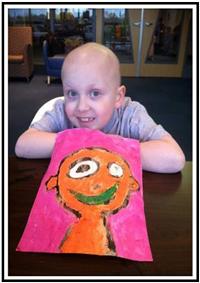Bridget & Me
By Guest Blogger Kelly Hines
When my friend Bridget moved into the neighborhood she was 12, just a year older than me, but at least 6 inches taller. She was beautiful, friendly, funny, and charming.
She was also a Jehovah’s Witness.
She was also black.
I didn’t know which was stranger.
Now, I am not a person who has ever said, ‘Some of my best friends are (black, gay, Yankees, etc)’. Certainly not as a child, when I lived in a middle class, predominantly white, predominantly Southern Baptist suburb. So sheltered was I that the appearance of this African-American family who didn’t celebrate birthdays or Christmas was enough to make me wonder just what else was out in the world. What next? Asians? Buddhists? New Yorkers? I was overwhelmed with possibilities.
Bridget and her family were, despite the no celebrations aspect of their religion, exceedingly normal. We liked the same kind of music and loved to paint our nails and play with makeup. We still liked to play with Barbies, even if we wouldn’t admit it to anyone else. She shocked me in the summertime when she wore sunscreen, and explained what being ‘ashy’ was. I tried to explain the social niceties of being Southern, and taught her every colloquialism I knew.
Bridget’s brother Brian was my brother Shane’s age, and they, too, became fast friends. I watched in horror as Shane excitedly tried to get our mom to feel Brian’s hair after we’d gone swimming. “Touch it!”, he was shouting, “It’s like it’s not even wet!” Brian stood there, skinny and six and dripping wet, while my mom finally, nervously, reached over and gave him a pat on the head. “Pretty cool, right?” Shane asked, and Brian smiled with pride.
“Pretty cool,” my mom agreed.
When we moved from that house, I stood in the driveway and held on to Bridget and promised through tears that I’d never forget her.
I was sixteen when we moved from North Carolina to California, and suddenly I was walking the halls of high school with every ethnicity, nationality, orientation, religion, and opinion imaginable. My classmates seemed to have only a zip code in common, and I walked among them wide eyed and red necked. In one cross country move, every idea I had about the relationships of people to one another was put into immediate practice. I’d considered myself worldly and knowledgeable, and found myself, in reality, to be small and ignorant.
But willing to learn.
One Saturday afternoon, I traveled with some new friends into San Francisco. The sights and smells were so overwhelming, they often had to double back to get me, or redirect my stares. I was entranced, I was in awe, I was in love. At one point, I stopped in the middle of the sidewalk to watch an elderly black woman dance. She was stooped and wrinkled, but moved with a fluidity I could not have matched. She was dressed in purple and green and yellow robes, which folded and fell around her body as she danced. I held my breath as I watched.
“What’s the matter, Carolina?” my friend leaned in and whispered, “Never seen a black person before?”
I thought of Bridget. I thought about what I thought I knew, and what I was learning. I thought about perception, and about truth. “Don’t be silly,” I said, my eyes not leaving the dancer, “Some of my best friends are black.”







